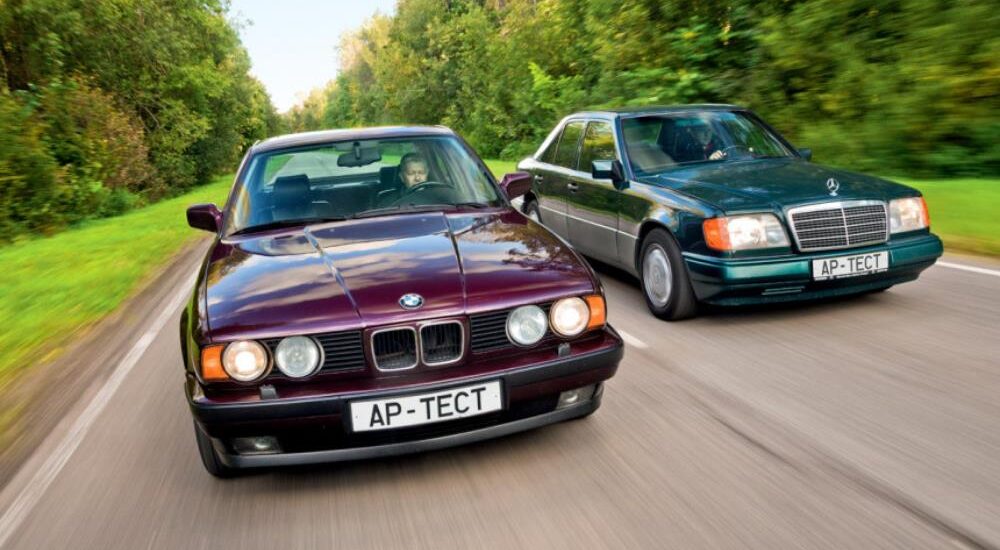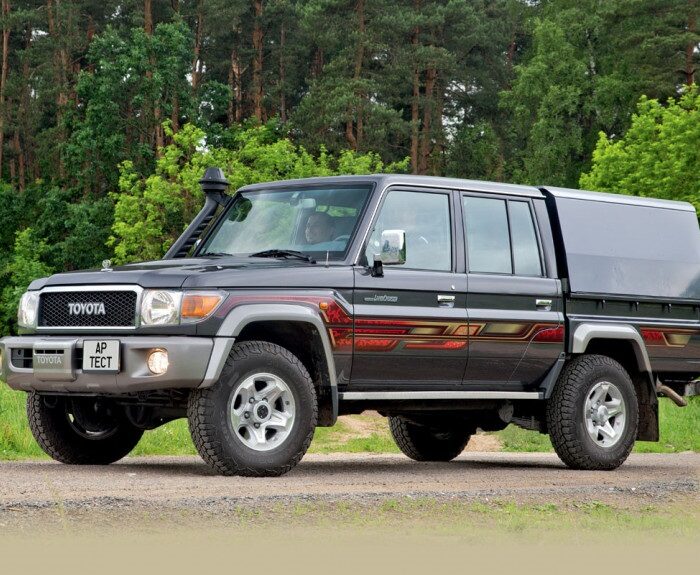Quando embarquei nessa série de testes de carros retrô, não esperava nenhuma surpresa. Afinal, está claro que um VAZ “nove” supera um Moskvich de 41, e um Volga dificilmente é administrável. Mas se aventurar no reino dos modelos internacionais se mostrou mais revelador. Você sabia que o Mercedes W123 é um verdadeiro carro para motoristas, enquanto o Mustang clássico é basicamente um colírio para os olhos? Agora, vamos enfrentar uma dupla aparentemente previsível: o BMW 535i da série E34 e o Mercedes-Benz E280 da geração W124. Espere o inesperado.
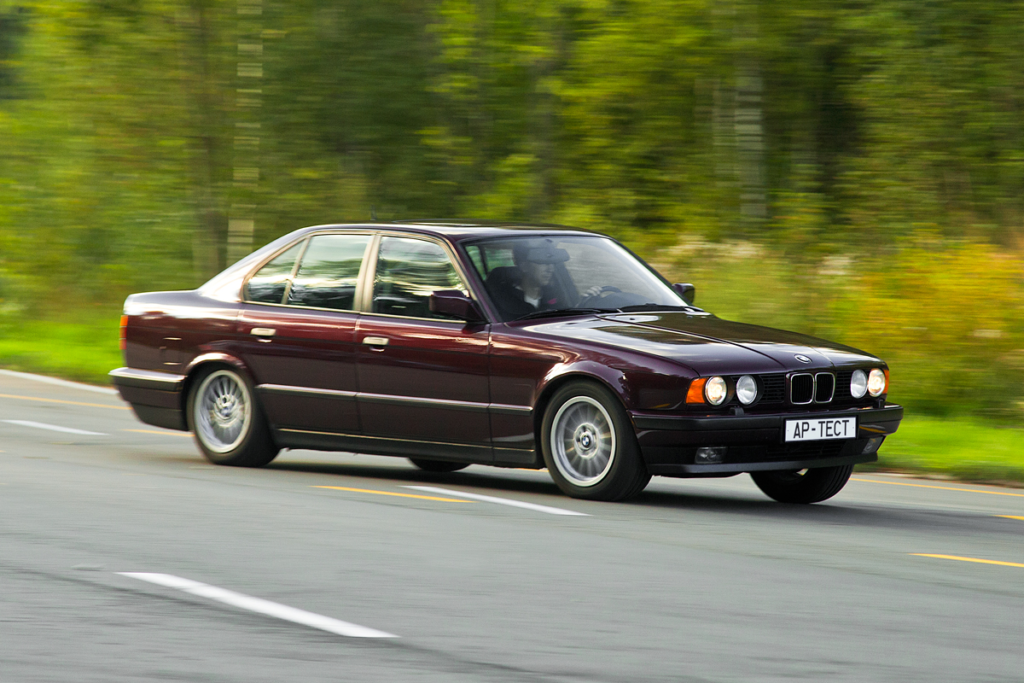
Sob o capô e além
A melhor maneira de conhecer a E34 e a W124 não é apenas dirigindo, mas examinando-as em um elevador. Essa perspectiva revela o máximo sobre a sofisticação do design e o investimento no desenvolvimento de cada modelo. A maioria desses carros agora mostra mais desgaste do que você esperava, destacando os fortes contrastes entre eles.
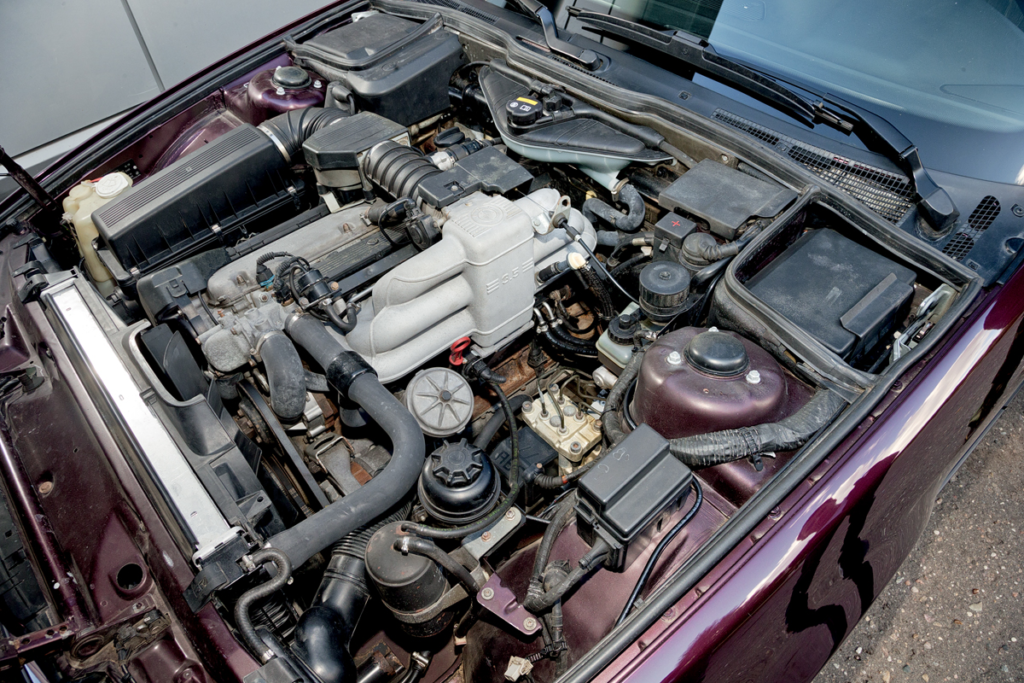
É interessante que, com base no motor M30B35, foi criado o sedã mais rápido da carroceria do E34 – o Alpina B10 Biturbo. Um par de turbocompressores Garrett T25 aumentou a potência de 211 para 360 cavalos de potência. A aceleração para “cem” levou pouco mais de cinco segundos e a velocidade máxima atingiu 290 km/h. Isso nos faz pensar, como foi o turbo lag?
O Mercedes W124 é um exemplo clássico de engenharia excessiva. Sua construção robusta remonta a 1984, inicialmente inspirada no sedã compacto W201. O W124 possui grandes membros longitudinais, subtramas substanciais, suportes McPherson com molas e amortecedores separados, uma sofisticada suspensão traseira de cinco elos, braços robustos, juntas esféricas, uma parte inferior plana da carroceria, acoplamentos elásticos duplos no eixo de transmissão e suportes hidráulicos para o trem de força. Ao inspecionar o E34 da BMW, você pode questionar suas datas de produção: será que o W124 realmente o antecedeu em três anos? A configuração da BMW parece mais antiga, usando uma tecnologia mais simples que não veria atualizações significativas até o lançamento da série de 1990.
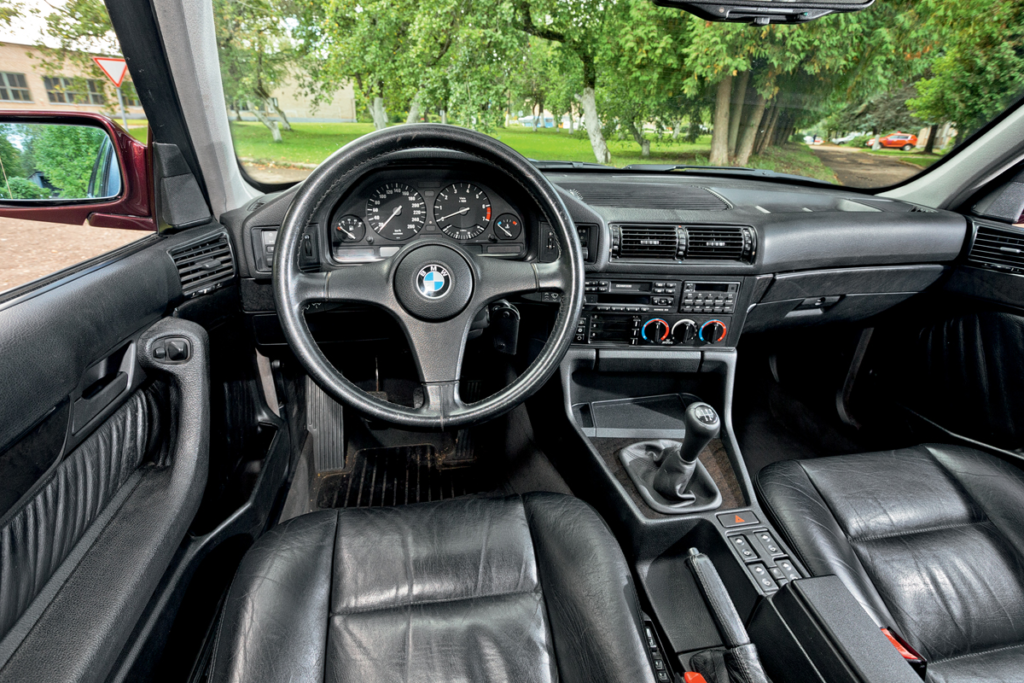
O interior do “cinco”, especialmente com o volante esportivo de três raios, é muito mais orientado para o motorista do que as configurações do chassi. A posição baixa do assento, ergonomia cuidadosa, onde você quase não precisa tirar os olhos da estrada para ajustar o “clima” ou o sistema de áudio. Após o facelift, botões redondos confortáveis foram substituídos por rodas, como em um Mercedes. E este é o último “cinco” com botões de janela no túnel central.
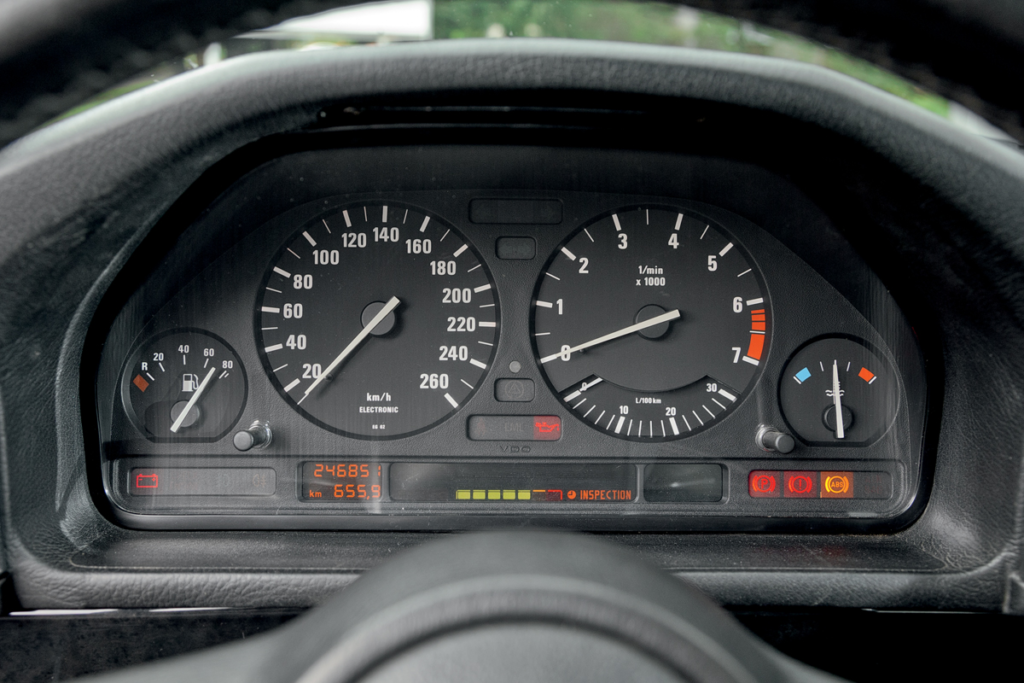
Trinta anos atrás, em Munique, eles chegaram ao formato perfeito para os instrumentos. E é uma pena que mais tarde eles tenham que estragá-lo deliberadamente – olhe para as escalas desenhadas dos BMWs atuais. A zona vermelha no tacômetro começa logo após 6000 rpm – o motor M30B35 não gosta de girar.
No entanto, a configuração mais simples da BMW não impediu que o M3 E30 superasse o Mercedes 190E Evo, sugerindo que a complexidade bruta nem sempre se correlaciona com uma dirigibilidade superior. É por isso que estou reservando o julgamento — por enquanto.
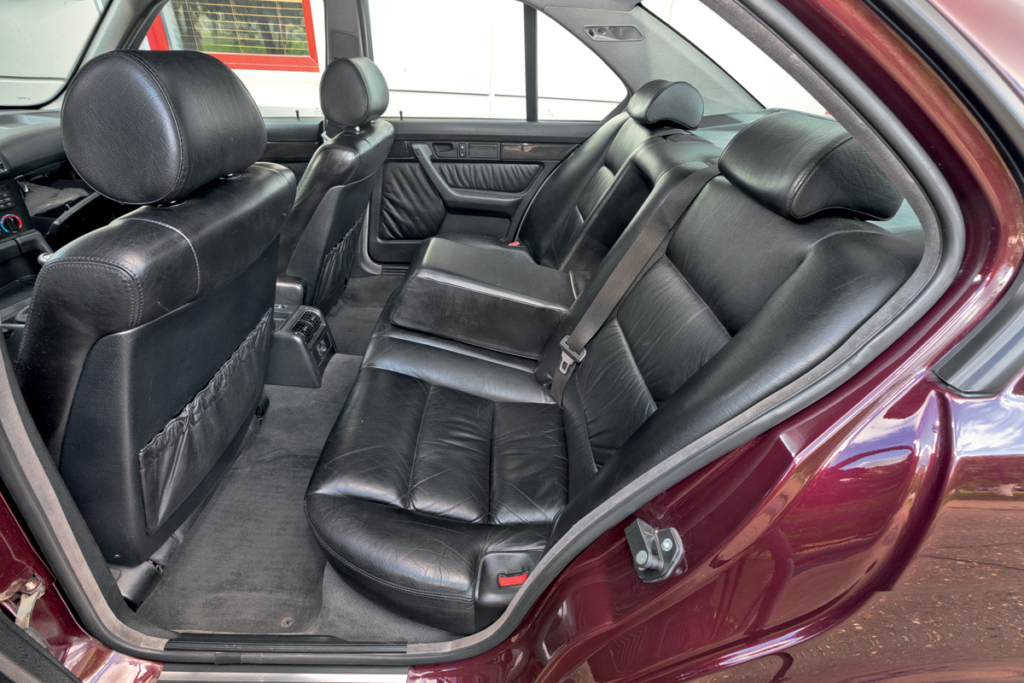
Em termos de dimensões, a série “cinco” do E34 praticamente repete a atual série “três” – assim como o espaço para as pernas nas costas: se você está acima da altura média, não conte com conforto.
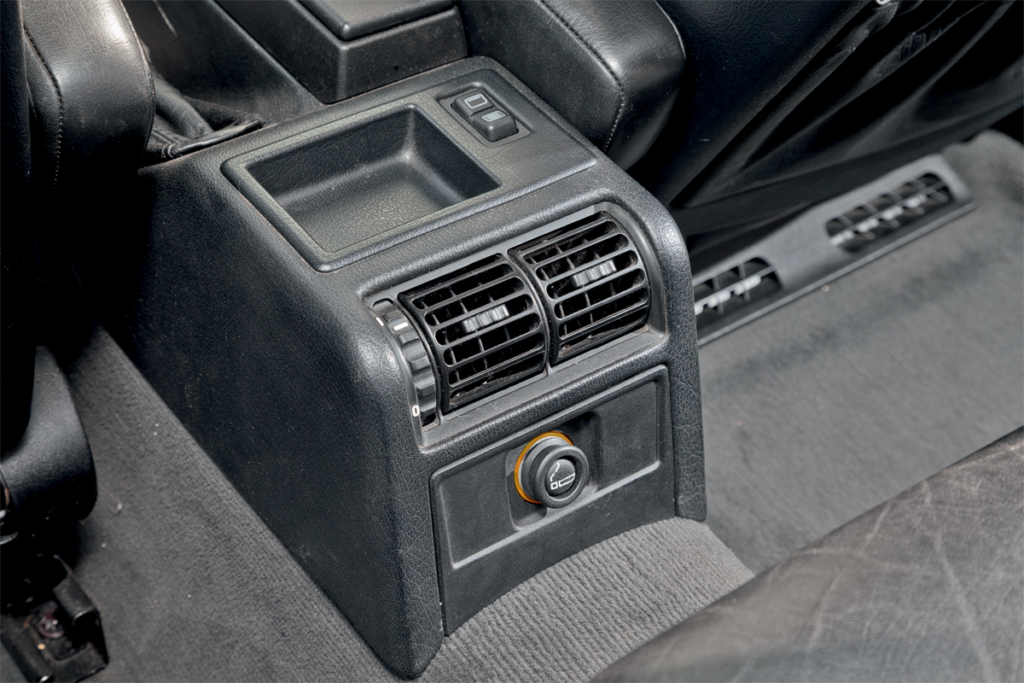
Trinta anos atrás, fumar estava em voga: há um cinzeiro em cada porta traseira e isqueiros – tanto na frente quanto atrás.
BMW 535i E34: projetando um clássico
O BMW 535i E34, movido pelo reverenciado motor M30 de câmera única, costuma ser considerado um dos melhores “Fives”. Para acessar o motor, um puxão na alavanca levanta graciosamente a frente do capô. O design do motor, especialmente o coletor de admissão que poderia pertencer a um museu de design, fala muito sobre a atenção da BMW aos detalhes. Apesar de seu tamanho — 3,4 litros e seis cilindros, cada um com 92 mm de diâmetro — os 208 cv do motor parecem modestos em comparação com sua massa de 1607 kg (a Mercedes tem 1585 kg). Mas combinado com um manual de cinco marchas e um diferencial de deslizamento limitado e asfalto novo por baixo, o potencial do carro parece renovado.
No entanto, é realmente um artista?
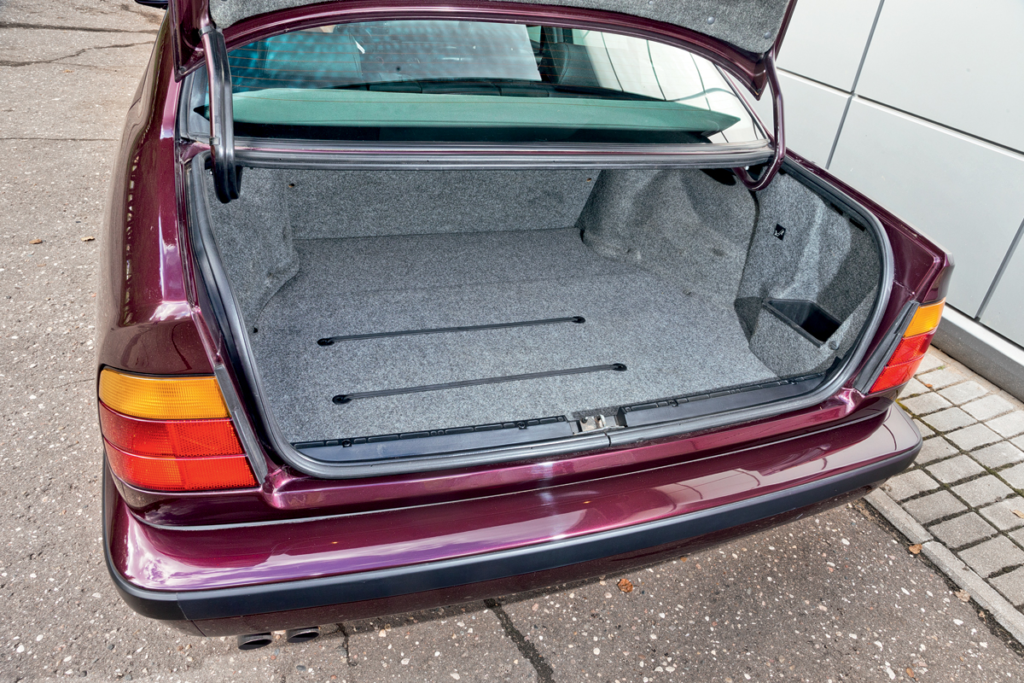
O porta-malas é conveniente e grande, alguns elásticos exclusivos no chão sobreviveram até hoje – assim como no meu cupê E82.
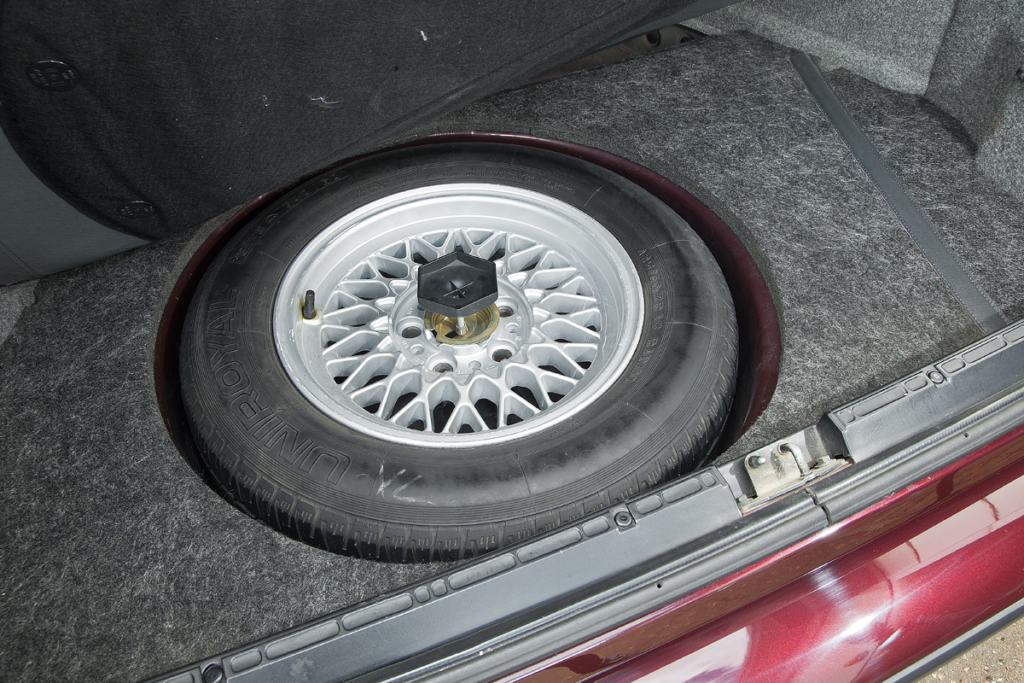
Houve momentos em que a roda sobressalente não incomodou os designers da BMW.
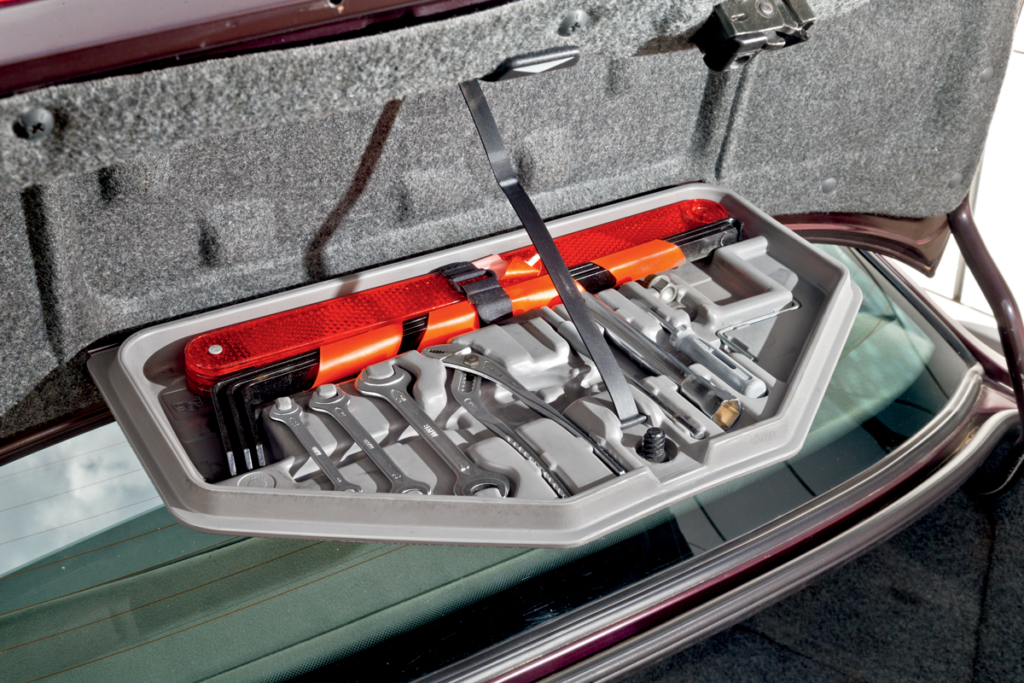
Seu jovem tem um conjunto completo de ferramentas exclusivas? O conteúdo deste baú é motivo de orgulho para todos os proprietários de um BMW antigo.
Não apenas um carro, mas uma “ferramenta”
Este BMW 535i pode ser um dos melhores exemplos do país, restaurado meticulosamente ao longo de vários anos para uma condição quase original. A cabine exala o aroma de couro rico e plásticos texturizados, com assentos confortáveis e um painel com medidores autenticamente clássicos — uma visão rara em BMWs modernos.
O “seis” em linha do carro ronrona mais profundamente em marcha lenta do que o V8 de um BMW 740i. A transmissão é excepcionalmente precisa para um BMW, sem a típica distância longa pela cabine, embora o ponto de engate seja sutil. O torque do motor facilita o afastamento, mas não espere uma aceleração empolgante — esse não é um carro esportivo moderno. No entanto, na pista de testes, o “Five” supera suas especificações oficiais, correndo a 100 km/h em 7,6 segundos com uma velocidade máxima de 237 km/h e mantendo a compostura mesmo em altas velocidades.
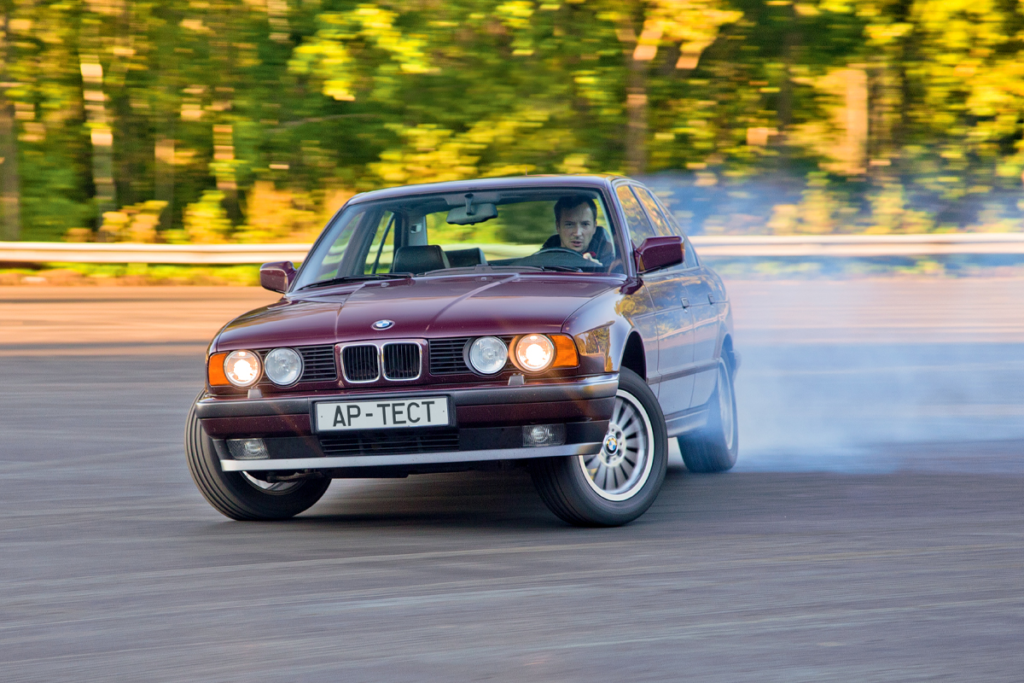
Não se deixe enganar pela foto dramática – o E34 padrão resiste a essa direção em asfalto seco.
Mas há um problema. O 535i responde lentamente às entradas de direção. É quase como se o carro resistisse a manobras rápidas, exigindo curvas significativas nas rodas para percorrer curvas acentuadas. Condução rápida e reativa? Não é bem o seu forte. Este BMW não faz com que você se esforce; é competente e seguro, mas, de alguma forma, decepcionantemente simples.
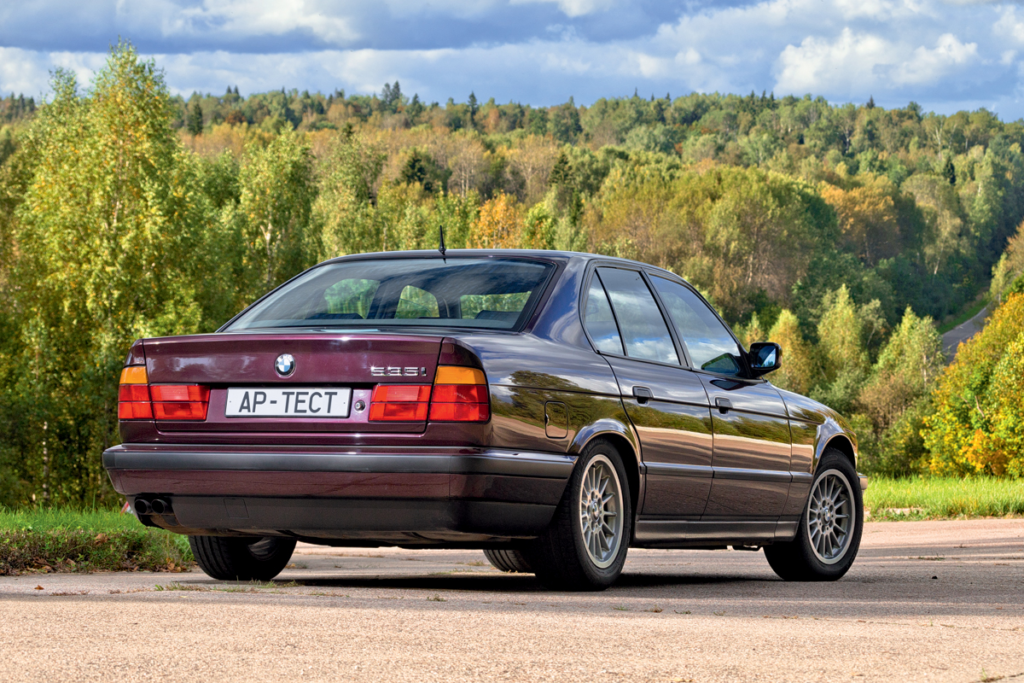
BMW x Mercedes: os intangíveis
Contra a Mercedes, que tive o prazer de dirigir de Moscou até a pista de testes, a BMW parece desanimadora. O Mercedes não apenas combina, mas aprimora cada viagem com uma sensação de segurança, uma aura de nobreza e uma frequência misteriosamente satisfatória de vibrações corporais que ressoam subconscientemente com os aficionados da Mercedes.
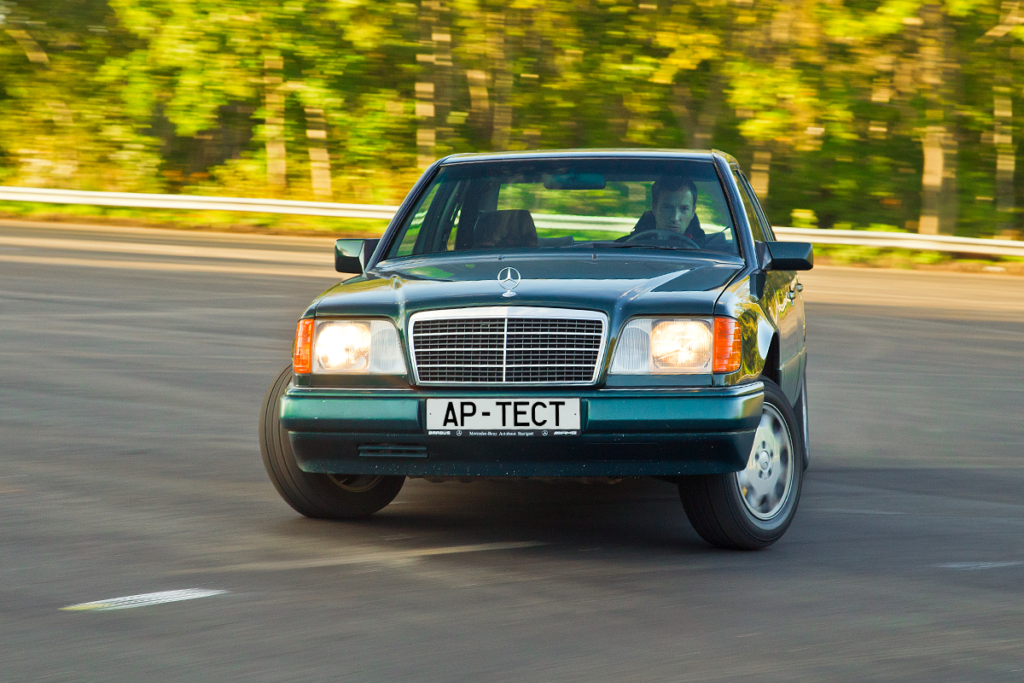
Em contraste, o interior da BMW, apesar de suas armadilhas tecnológicas, carece da essência emotiva que torna o Mercedes tão cativante. O E280 não se limita a se mover; ele desliza com uma sutileza que faz com que cada viagem pareça fácil e cada quilômetro mais suave.
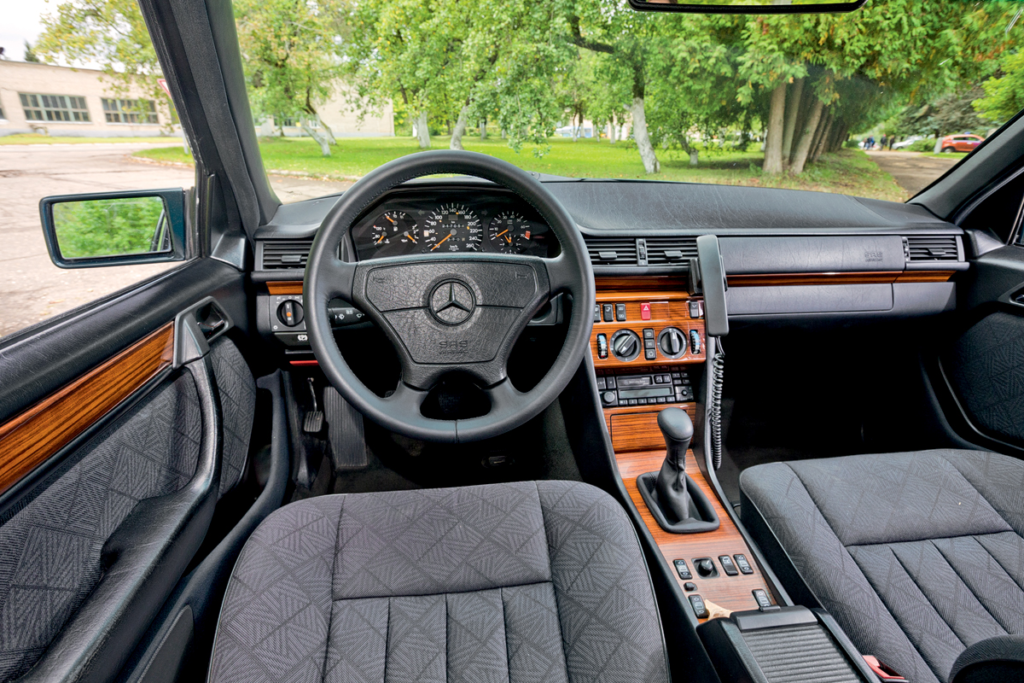
Eu costumava não gostar dos interiores da Mercedes daquele período, mas agora aprecio esse estilo minimalista. É uma pena que bons tecidos tenham desaparecido das cabines das classes E modernas – acho que esse acabamento é mais aconchegante do que o couro.
Então, por mais que me doa dizer, o BMW 535 e o E34 pode ser uma maravilha de sua época, mas neste confronto direto, o Mercedes-Benz E280 W124 não apenas atende à referência, mas a define.
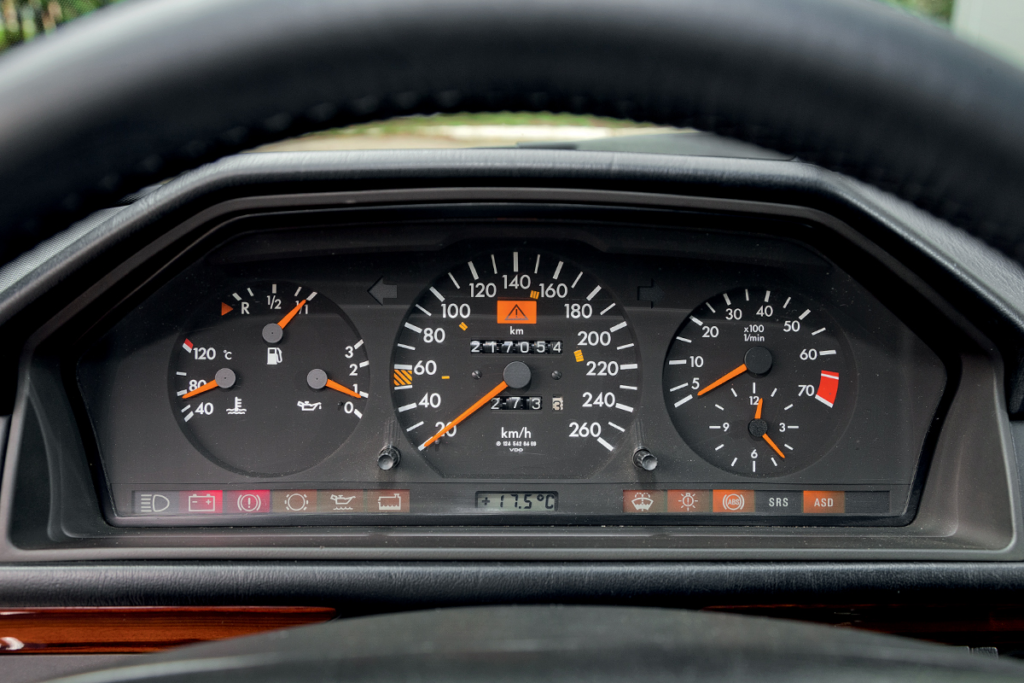
Instrumentos clássicos com relógios são memoráveis por sua iluminação externa original, como se estivessem em um palco teatral. A versão da BMW, onde os próprios símbolos se iluminam, é certamente mais moderna, mas a Mercedes cria um clima calmante especial em uma estrada noturna.
Proeza do trem de força e paridade de desempenho
Para uma comparação impecavelmente precisa, eu teria idealmente adquirido um W124 pré-facelift equipado com uma câmera única “six”. No entanto, o modelo em questão é movido pelo motor M104 de 193 cv, mais avançado. Embora possa atrasar um pouco na aceleração paralisada em comparação com seu concorrente, o processo superior de troca de gás desse motor garante melhor elasticidade, e nosso Mercedes também possui uma transmissão manual de cinco marchas. No entanto, o que realmente diferencia o desempenho da Mercedes é a sutileza de sua aceleração — ela é praticamente imperceptível.
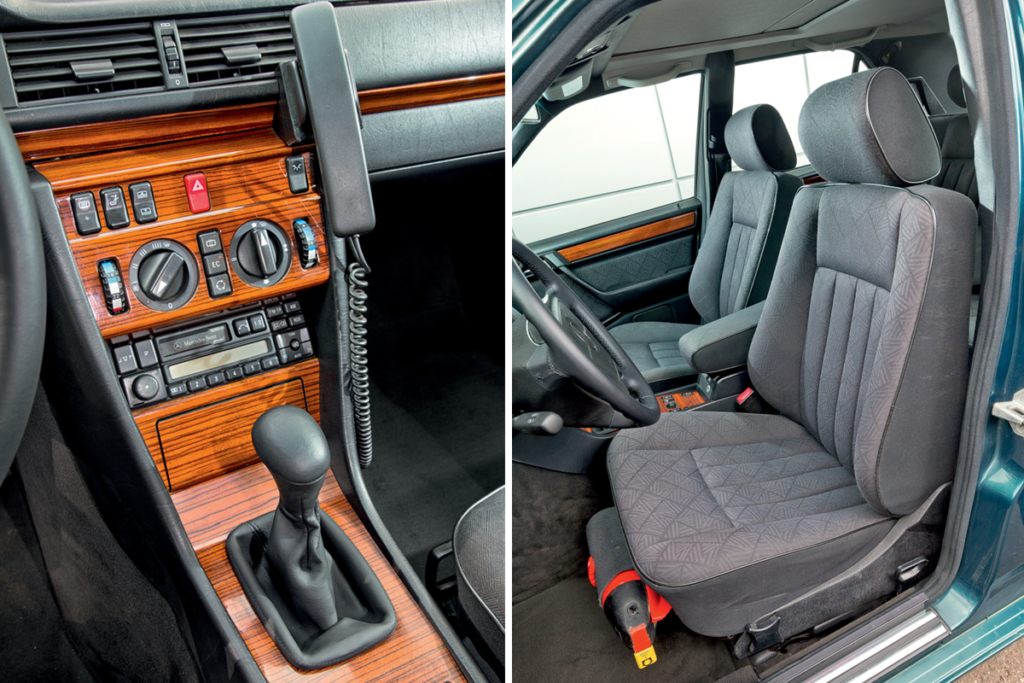
Um assento com uma almofada com mola e um encosto largo dá-lhe as boas-vindas como uma família, mas dificilmente o segura em curvas.
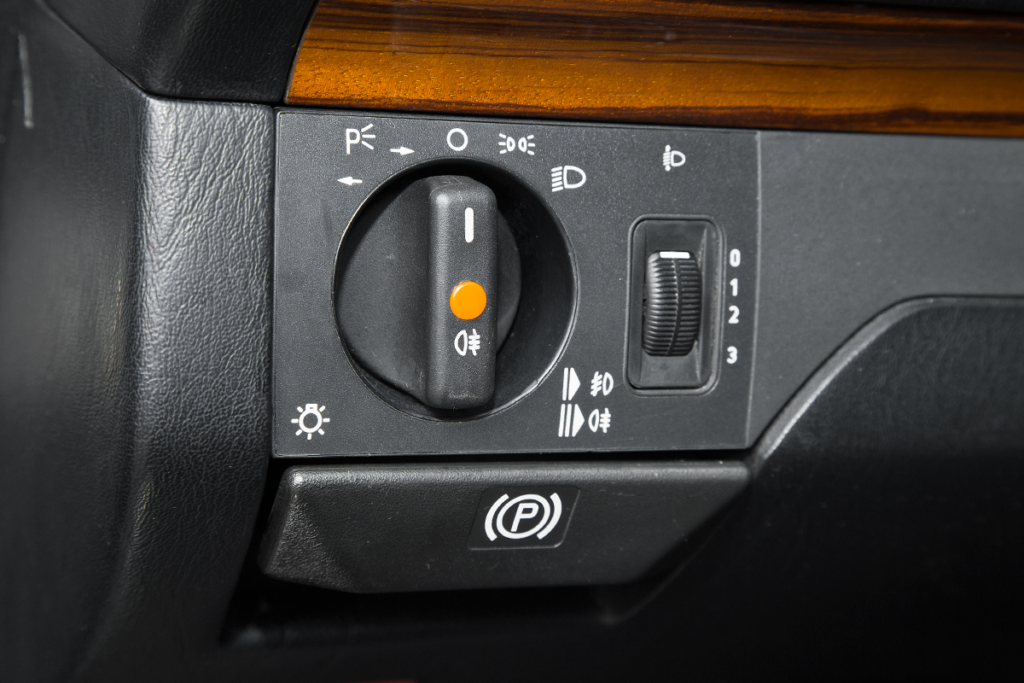
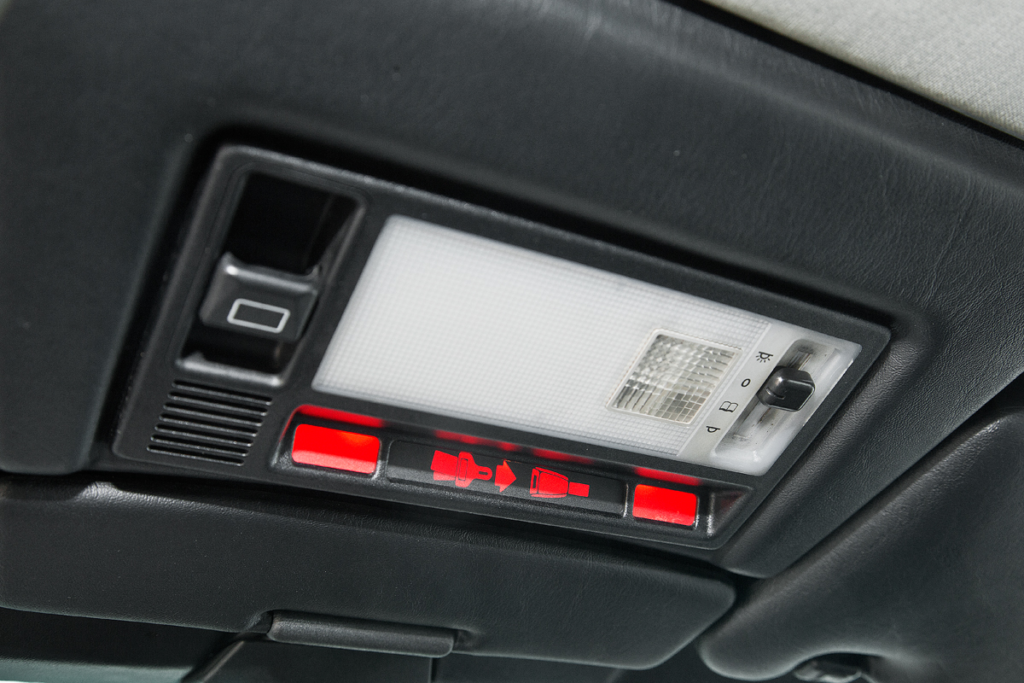
O poder furtivo do W124
Este Mercedes decola com uma suavidade incrível, semelhante a um veículo elétrico. O motor permanece praticamente silencioso até atingir 5.000 rpm, e somente o tacômetro revela a atividade sob o capô. Cada pressão no acelerador parece perfeita, como se estivesse desprovida de qualquer transmissão mecânica — sem caixa de câmbio, eixo de transmissão ou diferencial à vista. A Mercedes dominou a arte de mascarar os processos mecânicos, fazendo com que a experiência de dirigir pareça menos como operar uma máquina e mais como empunhar um instrumento de luxo bem ajustado.
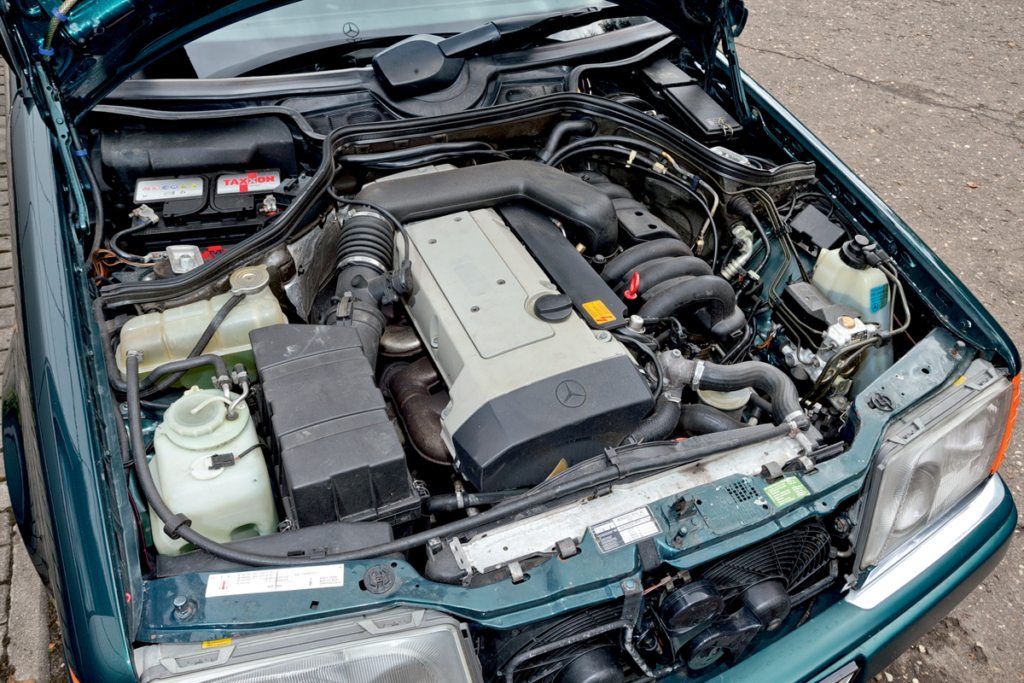
Esses motores da família M24 de 104 válvulas ganharam a reputação de alguns dos mais confiáveis da história. Observe o aquecedor embutido no reservatório do lavador do para-brisa – a Mercedes está cheia dessas soluções inteligentes.
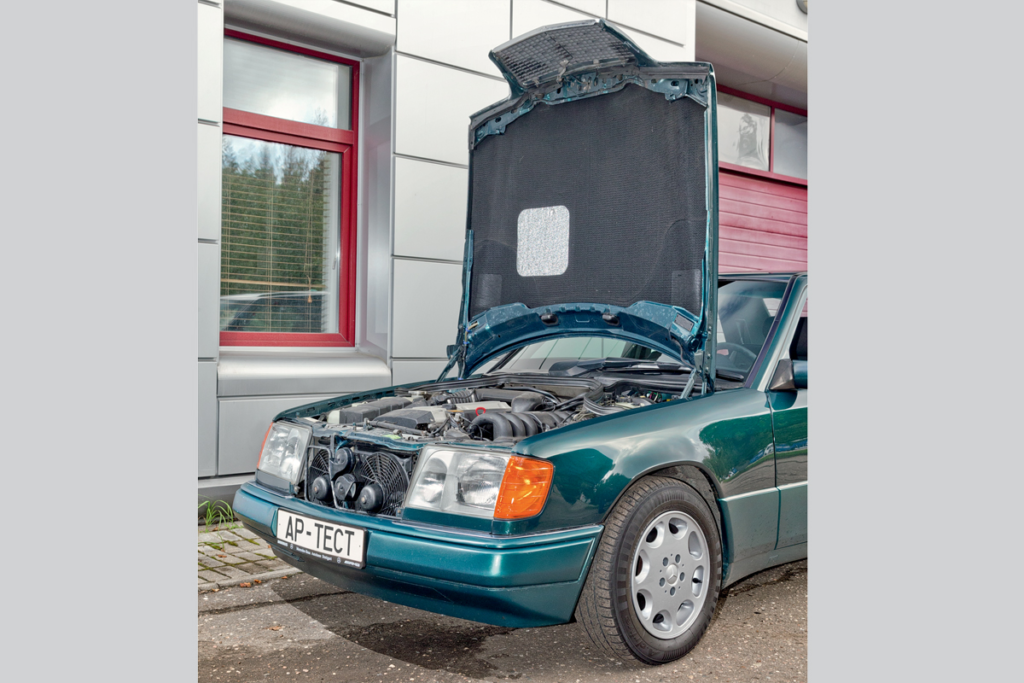
O capuz jacaré pode ser levantado quase verticalmente.
No entanto, essa suavidade não deve ser confundida com falta de vigor. Quando necessário, o W124 pode facilmente ultrapassar a marca de 200 km/h e rapidamente assumir a liderança nos semáforos. Além disso, seu manuseio parece muito mais contemporâneo do que o da BMW.
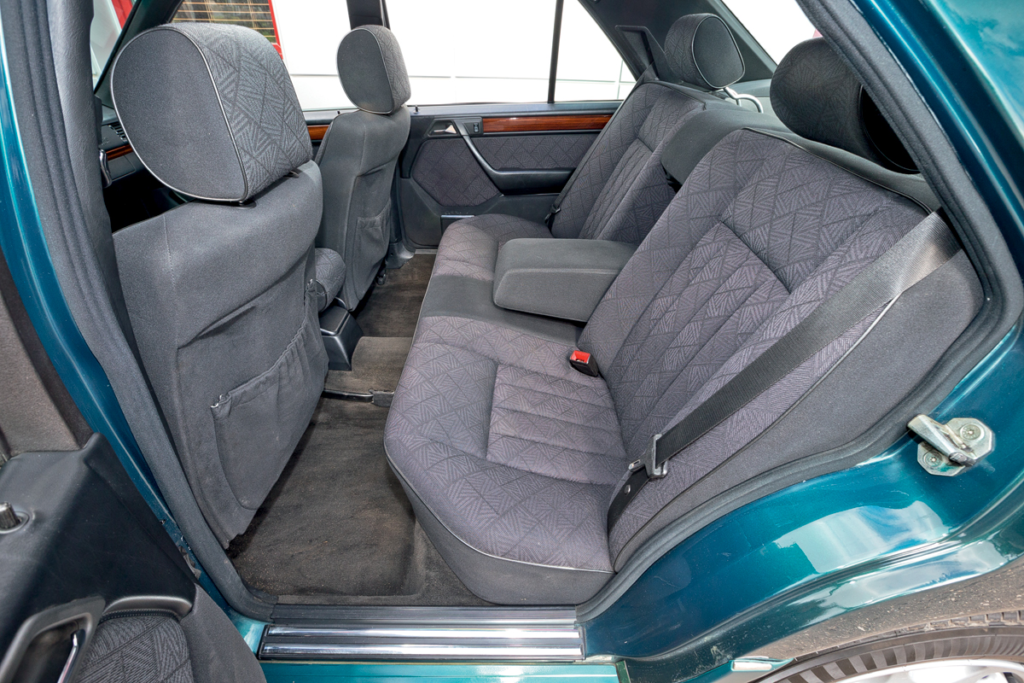
A altura do sofá, o posicionamento dos apoios de braços nas portas, o ângulo do encosto – tudo é excelentemente ajustado. O espaço para as pernas no Classe E é comparável a um Camry contemporâneo.
Um estudo sobre direção e estabilidade
Desde o primeiro giro do volante, é evidente que esses veículos vêm de diferentes eras da engenharia. O Classe E é marcadamente mais responsivo, com reações que podem rivalizar com os veículos modernos. O manuseio assertivo da Mercedes pode parecer avassalador inicialmente, mas rapidamente se torna um recurso valioso, oferecendo feedback preciso sem comprometer a informatividade. Apesar da significativa rolagem da carroceria, semelhante à da BMW, ela não diminui a precisão da trajetória do carro, graças em parte à sua avançada suspensão traseira de cinco elos, que melhora o engate externo das rodas.
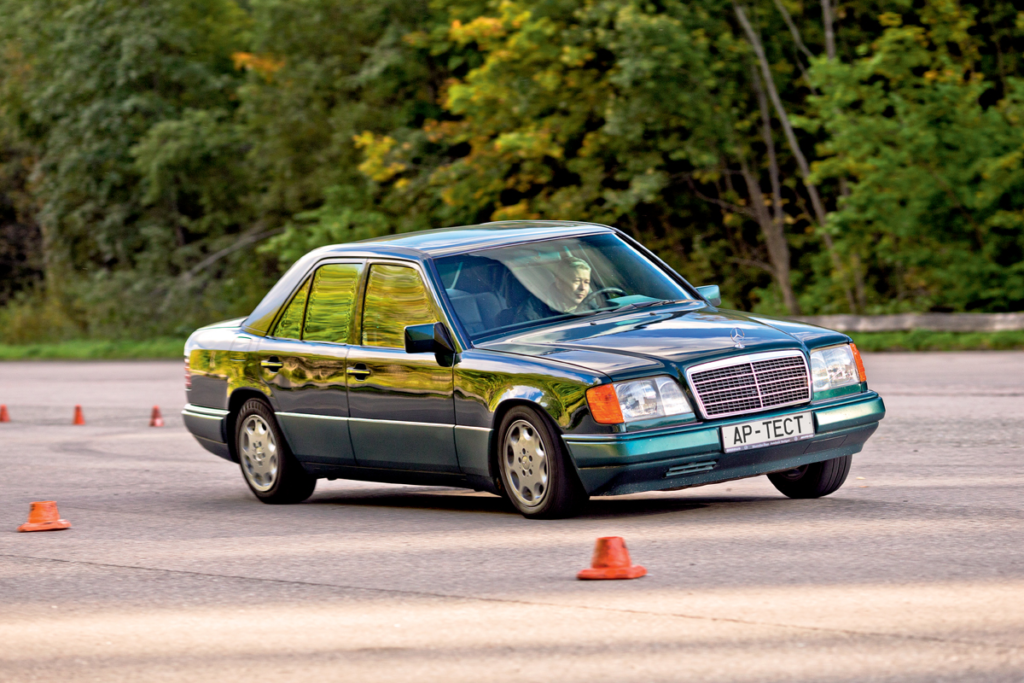
Características inovadoras e destaques de manuseio
Nosso veículo de teste foi equipado com o ASD (Automatisches Sperrdifferenzial) opcional, um diferencial traseiro autotravante que usa um mecanismo hidráulico para melhorar a tração — particularmente eficaz abaixo de 38 km/h. Quando necessário, o diferencial trava completamente, melhorando perfeitamente a aderência e o manuseio durante manobras agressivas. Esse recurso exemplifica como a Mercedes executa deslizamentos de potência sem esforço, invertendo as normas automotivas e mostrando suas capacidades superiores de manuseio.
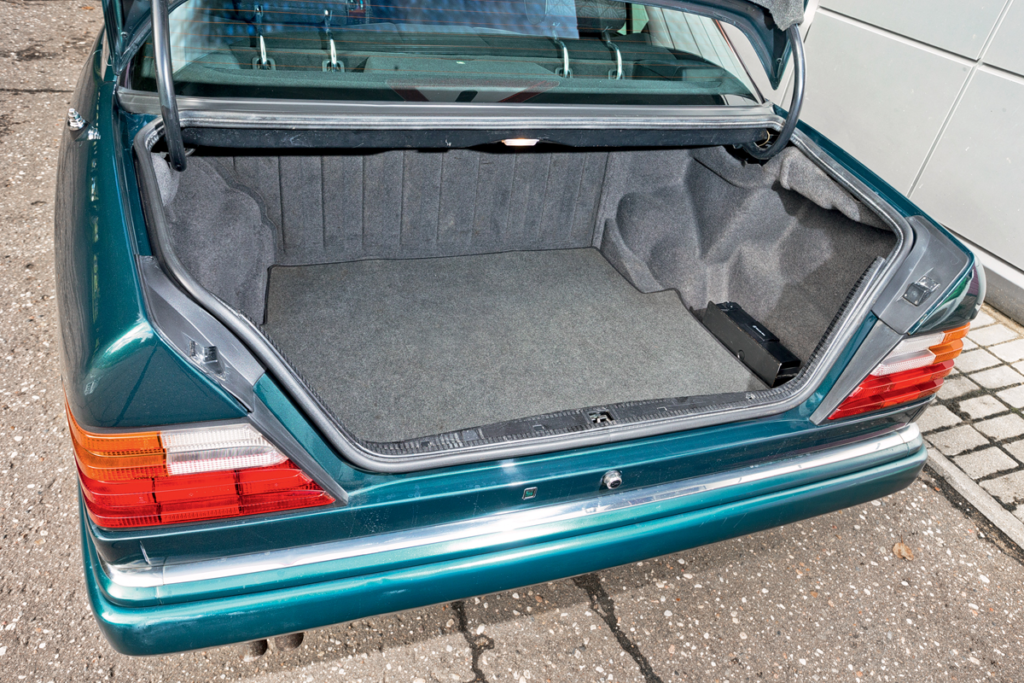
Não é possível aumentar o volume deste porta-malas: atrás do encosto, um tanque de combustível é instalado verticalmente.
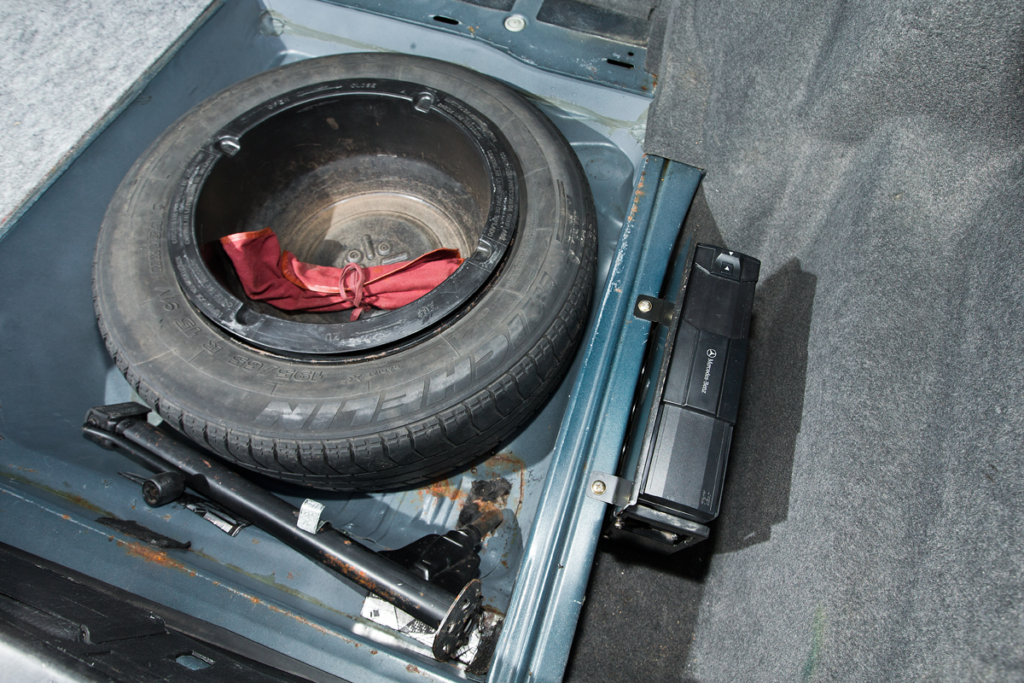
Claro, existe um nicho para uma roda sobressalente de tamanho normal.
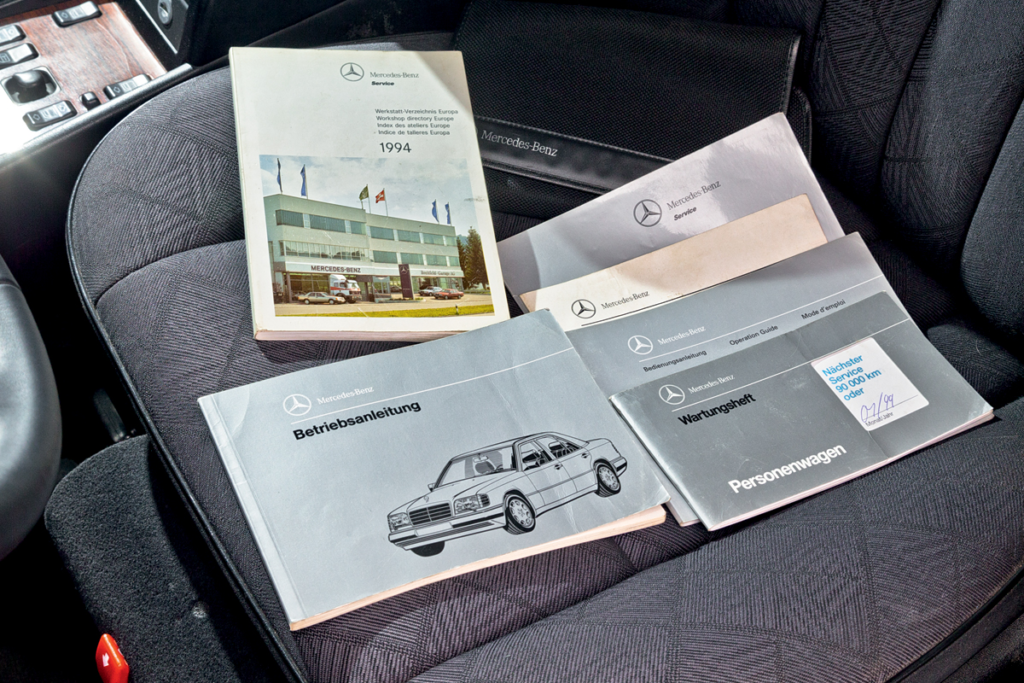
A documentação original do revendedor é um bônus agradável para qualquer jovem.
Mercedes Comfort incomparável
O Classe E não se destaca apenas em desempenho; ele oferece um nível excepcional de conforto que é característico da Mercedes. Desde sua luxuosa qualidade de condução até seu louvável isolamento acústico, ele define um alto padrão. Surpreendentemente, a suspensão da BMW também tem um desempenho admirável em superfícies irregulares, embora tenha dificuldades com solavancos mais curtos, uma característica peculiar devido ao seu perfil generoso de pneu.
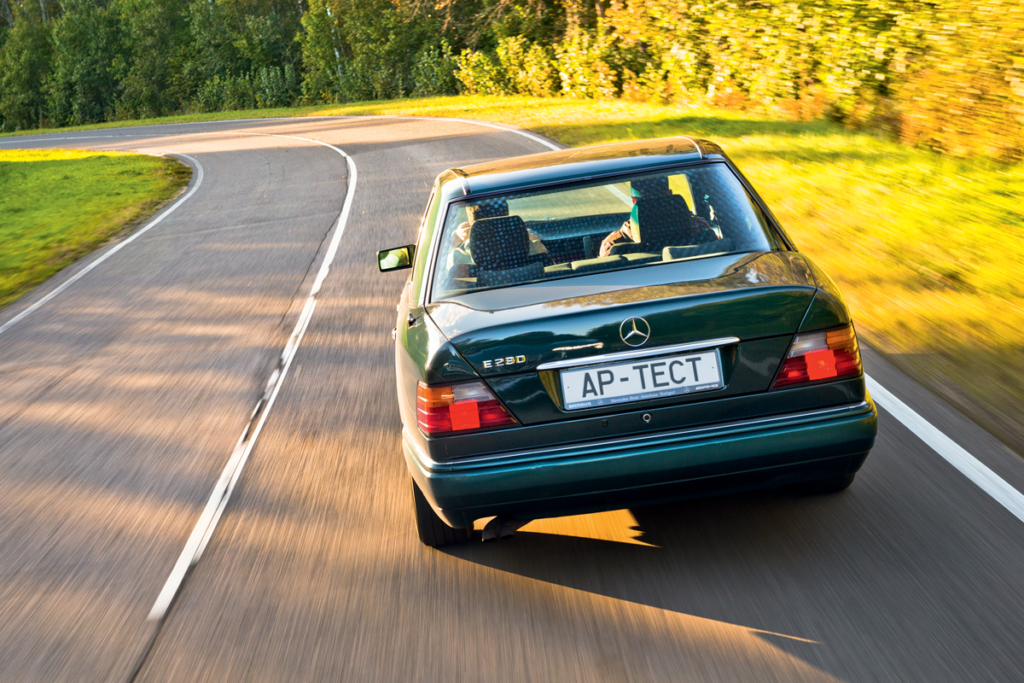
Conclusão: O legado do W124
Peço desculpas aos entusiastas da BMW, mas nos anos 80, a Mercedes reinou suprema, não apenas sobre sua contraparte alemã, mas também sobre suas próprias iterações subsequentes. Nenhum modelo posterior do Classe E conseguiu recuperar a combinação de elegância, desempenho e inovação tecnológica que o W124 entregou tão facilmente. Interagir com esse carro, desde a satisfação tátil de seu câmbio manual até o significado histórico de sua engenharia, é um lembrete da era dourada da Mercedes. Para aqueles que buscam um clássico que realmente represente o auge das conquistas automotivas passadas, o W124 é o benchmark eletrônico definitivo.
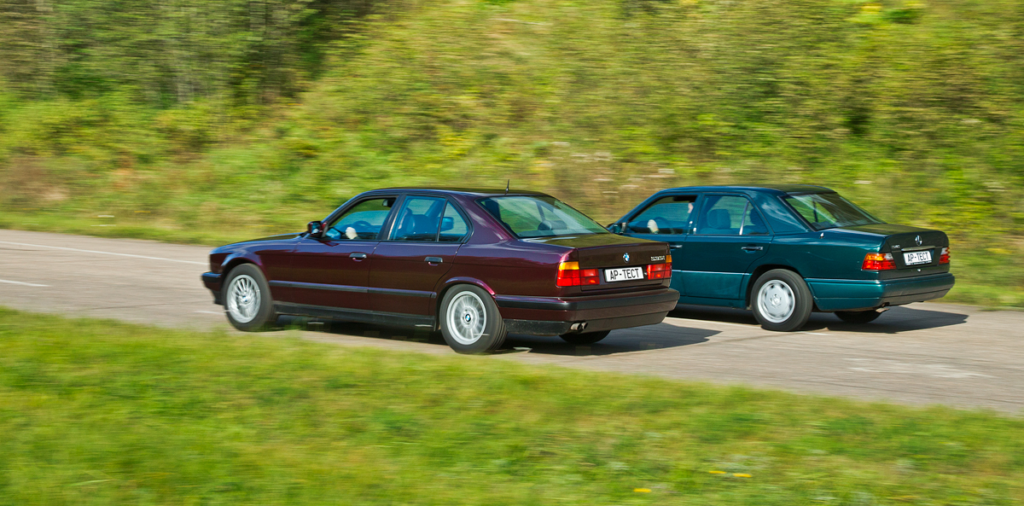
Foto: Dmitry Pitersky
Esta é uma tradução. Você pode ler o artigo original aqui: BMW 535i серии E34 и Mercedes-Benz E280 поколения W124: кто из них настоящий E-талон?

Publicado Julho 04, 2024 • 10m de leitura

